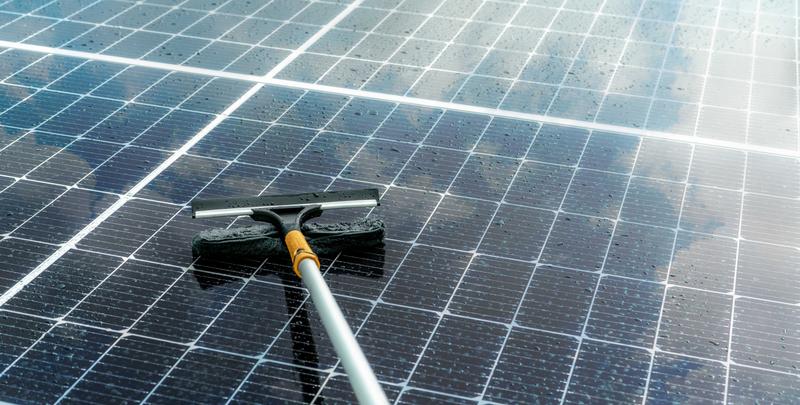
For those who’re attempting to find a higher-overall performance
Why Photo voltaic Panel Cleaning Issues
Photo voltaic panels capture Power at their best when clean up. Dust, pollen, hen droppings, and smog lessen effectiveness—occasionally by twenty% or even more. Normal cleansing assists maintain best functionality, extend panel everyday living, and guard your expenditure.
Primary Gains:
- Improved energy output
- Decreased electrical energy expenditures
- Extended panel lifespan
- Lessened threat of micro‑cracks due to thermal hotspots
Sorts of Photo voltaic Cleaning Instruments
Choosing the appropriate tool is dependent upon your set up, h2o availability, and wanted benefit. Categories include things like:
- H2o‑powered solar brush programs
- Moveable photo voltaic panel cleaning kit bundles
- Pure drinking water cleansing units
- Rotary solar brushes and extension poles
Water Powered Solar Brush Programs
These brushes hook up with a h2o source and spin whilst dispensing drinking water, combining cleaning and lubrication in one action. The end result: spotless panels without the need of scratching.
Important Functions:
- Integrated water feed throughout the brush head
- Comfortable bristles Safe and sound for glass surfaces
- Rotary movement cuts down handbook energy
- Mounts on extension poles for rooftop entry
Transportable Photo voltaic Panel Cleaning Kit
A complete
- Brush head (preset or rotating)
- Extension pole (adjustable lengths nearly six m)
- Hose adapters or speedy‑hook up fittings
- Pure‑drinking water tank or filtration program
- Delicate microfiber towels or squeegees
- Non‑abrasive cleaning solution (if authorized)
Advantages of All-in-One particular Kits:
- Start off cleaning with minimal set up
- Compact for storage or journey
- Compatible with household or commercial solar arrays
Pure H2o Photo voltaic Cleaning Units
These devices purify regional water—removing minerals and Dust—so it received’t depart scale or streaks. Pure water empowers Experienced-grade results without the need of chemical compounds.
How It Works:
- Pretreatment filtration (sediment, carbon, ion Trade)
- Last deionization or reverse‑osmosis phase
- Filtered h2o circulated by way of brush for cleaning
- Residue‑absolutely free drying—no spots or streaks still left powering
Rotary Photo voltaic Brush & Extension Poles
For large solar arrays or professional use, a power-rotating head with a telescoping extension pole helps make cleansing effective and Safe and sound.
Positive aspects:
- Less Bodily effort and hard work, more quickly protection
- Reach roofs and ground‑mounted panels quickly
- Adjustable shaft lengths for varying angles
- Universal speedy‑connect techniques for extras
Concentrate on Basic safety & Most effective Methods
Cleaning solar panels consists of heights and slippery surfaces—safety very first:
- Use non‑conductive extension poles
- Prevent pressure washers that will crack glass
- Get the job done early or late to stay away from glare and warmth
- Wear grips and slip-resistant shoes
- Observe nearby water‑use principles or constraints
Action‑by‑Action Cleansing Plan
- Turn from the photo voltaic inverter or be certain system is deactivated
- Rinse panels with reduced‑stress water
- Use a brush (or photo voltaic brush package) with drinking water feed
- Scrub gently in overlapping, linear passes
- Rinse carefully with cleanse h2o
- Dry with microfiber squeegee or smooth towel—only if essential
Selecting the Proper Solar Panel Cleansing Resource
Look at your setup as well as your water obtain:
Maintenance & Treatment Tips
- Flush hose and brush soon after each use
- Keep dry, clean, and from UV publicity
- Replace worn brush heads—and Examine bristle softness
- Inspect seals and connectors for leaks
- Exchange or clean up filters in pure‑water programs routinely
solar cleaning brush
Eco-Helpful Cleansing Benefits
Appropriate cleaning prolongs solar panel effectiveness and cuts down energy waste. Employing drinking water by yourself—without the need of soaps or chemicals—assists protect regional ecology and avoids runoff air pollution.
How Solar Panel Cleaning Impacts ROI
Sensible servicing working with high-quality brushes and kits retains system performance topped up, reducing the payback period and maximizing energy yield over time.
Expense Considerations & Benefit
- H2o‑driven solar brushes are Price-efficient and durable
- Pure h2o devices have to have upfront financial commitment but present regular, spot‑free cleansing
- Rotary brush kits Improve productivity—worthwhile for big installations
- DIY kits help you save labor costs; professional products and services Charge far more but release your time and energy
Prevalent Takes advantage of of Solar Panel Brushes
- Household rooftops
- Business photo voltaic farms
- RV or cellular installations
- Photo voltaic carports
- BIPV segments (constructing‑built-in photovoltaics)
Buyer Testimonials & Use Situations
“This solar panel cleaning brush built a apparent difference within just minutes—dust gone, no streaks, and our output improved!”
“Upgrading to the water‑driven photo voltaic brush saved hours of scrubbing. Combined with a pure drinking water system, the panels seemed new.”
FAQs About Solar Panel Cleaning
How frequently should panels be cleaned?
Just about every six to 12 months, dependant upon your local climate—much more typically in dusty or pollen-major regions.
Can rain clear photo voltaic panels?
Rain allows but doesn’t get rid of Grime buildup or film levels—guide cleansing yields improved overall performance.
Can I use tap drinking water?
Tap drinking water may well go away mineral residue. A
Can cleaning injury panels?
Only if abrasive equipment or substantial-force washers are applied. Normally use soft bristles, low-pressure, and adhere to manufacturer recommendations.
Professional Tips for Photo voltaic Panel Entrepreneurs
- Cleanse early early morning or evening to avoid thermal stress
- Monitor output details—if general performance drops, clean up panels
- Retain panels angled—standing drinking water promotes algae advancement if still left also lengthy
- Rotate brush heads periodically to take care of even don
Conclusion: A Brush for Every Will need
Irrespective of whether you’re in quest of a cost-helpful
Discover the complete line of brushes and equipment built specifically for solar cleaning at